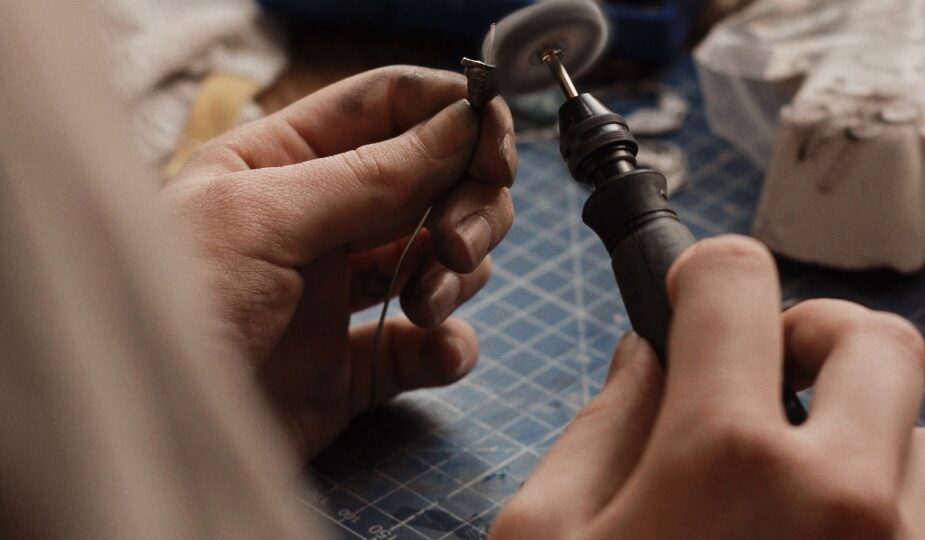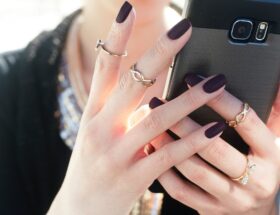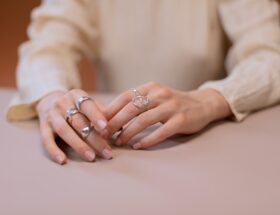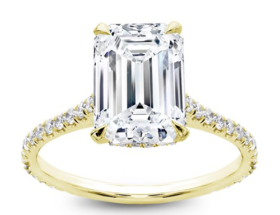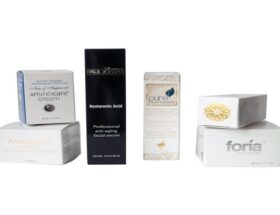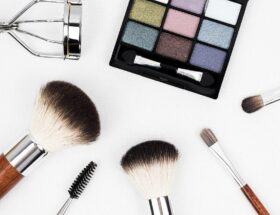Beads are adorable and likely the number one reason you’re interested in beading for beginners. Bead catalogs and in-person visits to a bead store are indispensable for learning about the wide variety of beads available and discovering personal preferences.
Choosing The Right Beads
Making beautiful jewelry is more of an art than a science. Practice and experimentation are the best way to learn how to pair beads for different projects. When selecting beads for a project, it is common to consider factors such as size, shape, and material.
Beading beginners can start with simple knotting styles for jewelry-making, such as the overhand knot and square knot.
The Significance of Bead Sizes
Bead sizes are typically expressed in millimeters (mm) due to the diminutive nature of the objects being measured. (Some sellers often give the English equivalent in inches for more oversized items.) Bead strands, however, are more commonly sold in inches. For instance, a 16-inch strand of 6mm beads would contain about 68 individual beads.
Beads can be found in a wide variety of forms. Common forms such as the circle, the bicone, the teardrop, and the oval can be found in various sizes and materials. Hearts, stars, animals, and leaves are some other popular shapes.
Precious and Semiprecious Beads and Findings
Using metal beads in jewelry design gives it a unique flair. Gold, sterling silver, genuine copper, gold-filled, and rose gold-filled beads are all historical greats in jewelry design. You can find various metal beads and components online and at your local craft store today.
You can find a wide variety of sterling silver beads and findings in the craft section of most stores. But, of course, someone could even have gold. And almost all have base-metal beads in various finishes designed to resemble antique bronze, patina-fraught copper, or tarnished silver.
Bead Types
Bicone
A bicone bead can be imagined as two cones with flat sides touching when placed on each other. This bead is the widest in the middle and tapers to a point at both ends. Faceted (many flat, polished cuts) and smooth bicones are both available. Crystal bicone beads with facets are widely used in fine jewelry making and can be found at any store specializing in such items.
Cube
The cube’s six sides are all the same length, making it a square bead. Cubes come in both faceted and smooth varieties. Faceted crystal cubes are typical, but smooth or faceted surfaces are also possible.
Nugget
Oddly enough, the shapelessness of this bead is what makes it distinctive. A nugget is an undefined hunk of beads. Instead, beads (often made of gemstones) with sharp corners and asymmetrical sides are used. Beads that are considered to be “round” are those that are, in fact, perfectly spherical. The ones not otherwise specified are smooth. These beads are fantastic as a standalone piece or to break up a string of differently shaped beads.
Rondelle
Roughly circular beads are called rondelles. They look somewhat like doughnuts in that they are round overall but compressed. Instead of going through the thin, rounded edge, the hole is drilled through the flat, more expansive side of the bead. The smooth circular edge is frequently adorned with crystals or a textured pattern. The rondelle is a familiar shape for spacer beads.
Tubes are long, narrow beads.
Understanding Seed Beads
Tiny, bright glass beads are likely displayed in tubes or bags along at least one wall of a bead shop near you. Seed beads are tiny glass or plastic spheres used in crafts like bead weaving. Jewelry staples like necklaces, bracelets, and earrings can be easily fashioned from larger seed beads. Shop for a diamond bead kit to learn the basics of beading, such as the peyote stitch or brick stitch. There is a specific set of guidelines for working with seed beads. They use a convoluted numbering system that, once deciphered, allows for easy identification of individuals.
Size is just one factor to consider; other variables include color (including some neat inverted transparent beads) and shape (including hexagonal, square, and triangle) for your creations.
Handling Your Resources
What you make a design out of is greatly affected by your chosen components. You can set the mood for the whole thing with your choice of crystals, turquoise nuggets, or sterling silver rondelles.
Gemstones
Emeralds, rubies, and diamonds are all examples of gemstones that come to mind when the term is mentioned. Of course, they are gemstones, but many of us can’t afford to use them in our traditional jewelry designs. Fortunately, many other gemstones, such as pearls, onyx, hematite, and fluorite, may be suitable alternatives. In addition, the prices for these semiprecious stones are surprisingly reasonable, especially for the quality you receive.
Get The Hang Of The Lingo
The price of the beads should reflect the difference between synthetic (grown in a lab), simulated (glass colored to look like gemstones), natural (100 percent naturally occurring and unaltered), and genuine (created in nature but may have been altered in some way). It is legal to sell stones that have been altered, but sellers must let buyers know exactly how the stones were modified. Learn all the details before you commit any money. Don’t give someone more money than they’re worth.
Spend Only What You Can Afford And Use
There are two valid points of view to consider here. For one, the price per bead usually decreases as the number of beads purchased increases. But, conversely, your total dollar amount will increase as your order total does. Therefore, you should shop carefully and strategically for these beads because they can be expensive.
Using Crystal and Glass
Inexpensive and common, glass beads are a good choice. Rounds and bicones with many facets look great in just about any design. In addition, simple glass beads can be used to make stunning jewelry.
Not all glass beads are created equal. Handmade glass beads are an art form in and of themselves, and artists create a stunning variety of them.
To help you get started, here are a few different types of content:
Dichroic
Dichroic charms, pendants, and glass beads are iridescent and appear in different colors depending on the angle at which you look.
Lampwork
Lampwork beads are created in several steps using a torch and bead canes. Most glass beads are shaped by the artist, who then decorates them with molten glass in the painting style by adding surface designs such as flowers, swirls, and bumps.
To make crystal, lead is added to regular glass. (Since the lead in the glass has been stabilized, it’s entirely safe for use.) Then, certain crystals, typically colorless ones, have had a coating applied to them. The crystals’ most popular coating is aurora borealis, or AB for short, which gives them an iridescent sheen.
Clay Beads
There are currently many unique and exciting clay beads available. Colorful millefiori cane beads are the sole focus for some jewelry designers who work in this adaptable medium. Artists who work with one-of-a-kind pieces frequently sell beads that can be used in your jewelry creations. Visit art fairs and shows where handmade goods are sold to find polymer clay artists.
Wirework, Threadwork, And Cordwork
If you can string beads on it, we’ve likely used it in jewelry. On the out, on hand, we have probably
Size And Strength of Wire
Did you believe that every single wire was just very, very long and very, very thin? No, that’s not the case. When comparing two pieces of wire at first glance, the differences become immediately apparent upon inspection of the wire’s cross-section under a microscope. The rule of thumb is that the smaller the gauge number, the smaller the diameter of the wire. So, a wire with a gauge of 18 is thicker than one with a gauge of 26. The hardness of a wire gauge indicates how easily it can be bent into a desired shape when working with precious metals such as gold-filled or sterling silver. Dead soft wire is the most malleable, followed by half-hard and then full-hard (not very malleable).
Stringing Materials Such As Cords, Threads, And Needles
Today, cording is available in a wide variety of materials. Some of our absolute favorites are the following:
Stretchy Cord
It can be used to create jewelry that doesn’t have to be fastened in any particular way. Instead, the cord can be stretched over a hand, a head, or anything else that might be in the way.
Leather Cord
This multi-tasking string is ideal for knotting styles for jewelry-making, and it can also be finished with significant findings that can handle its thickness.
Beading Wire
Nylon-coated stainless steel beading wire is essential for most jewelry projects. Because of its remarkable adaptability and durability, it can be used for various tasks. Soft Flex, Beadalon, and Accu-flex are well-known brands of beading wire.
Beading wire is nylon-coated stainless steel wire when seen on a list of materials. The wire is a material that can be bent without breaking. Unfortunately, we must agree with the manufacturers, even though we think it’s a mess.
Nymo
Bead weaving with Nymo, a nylon thread similar in appearance to sewing machine thread. It comes in a wide range of colors and thicknesses and can be purchased in smaller increments on spools roughly the size of bobbins. To prepare nymo for weaving, a thin layer of beeswax is applied and left to dry.
Silamide
Silamide is a pre-conditioned thread ready to use, making it ideal for impatient bead weavers. Larger quantities are sold on spools, while smaller quantities are sold wrapped around display cards. While it lacks Nymo’s rainbow of hues, it still offers a pleasing palette with shades of purple, blue, pink, off-white, black, and brown.
Kevlar
Some bead weavers are particularly fond of Kevlar (the material used to make bulletproof vests) because it is so strong and thin, making it ideal for stringing beads. However, the limited color palette is a drawback.
Braided Thread
Nylon cord resembles traditional fishing lines and goes by brand names like FireLine and Power Pro. It’s excellent for beadwork and has a broad fan base among those who work with beads because of its high strength and versatility (it comes in a transparent color and can be used with beads of any color).
Silk
Silk has been used for stringing and knotting pearls and other gemstones for hundreds of years, and it is still the best material for this purpose. It’s offered in a rainbow of hues. Silk is available on small display cards with an attached needle and large spools without the needle, depending on your quantity requirements.
Nylon
Some bead stringers favor nylon beading thread over silk because it is more durable and less prone to snagging and stretching. In addition, nylon is an excellent option if you want to use a knot between your gemstone beads.
